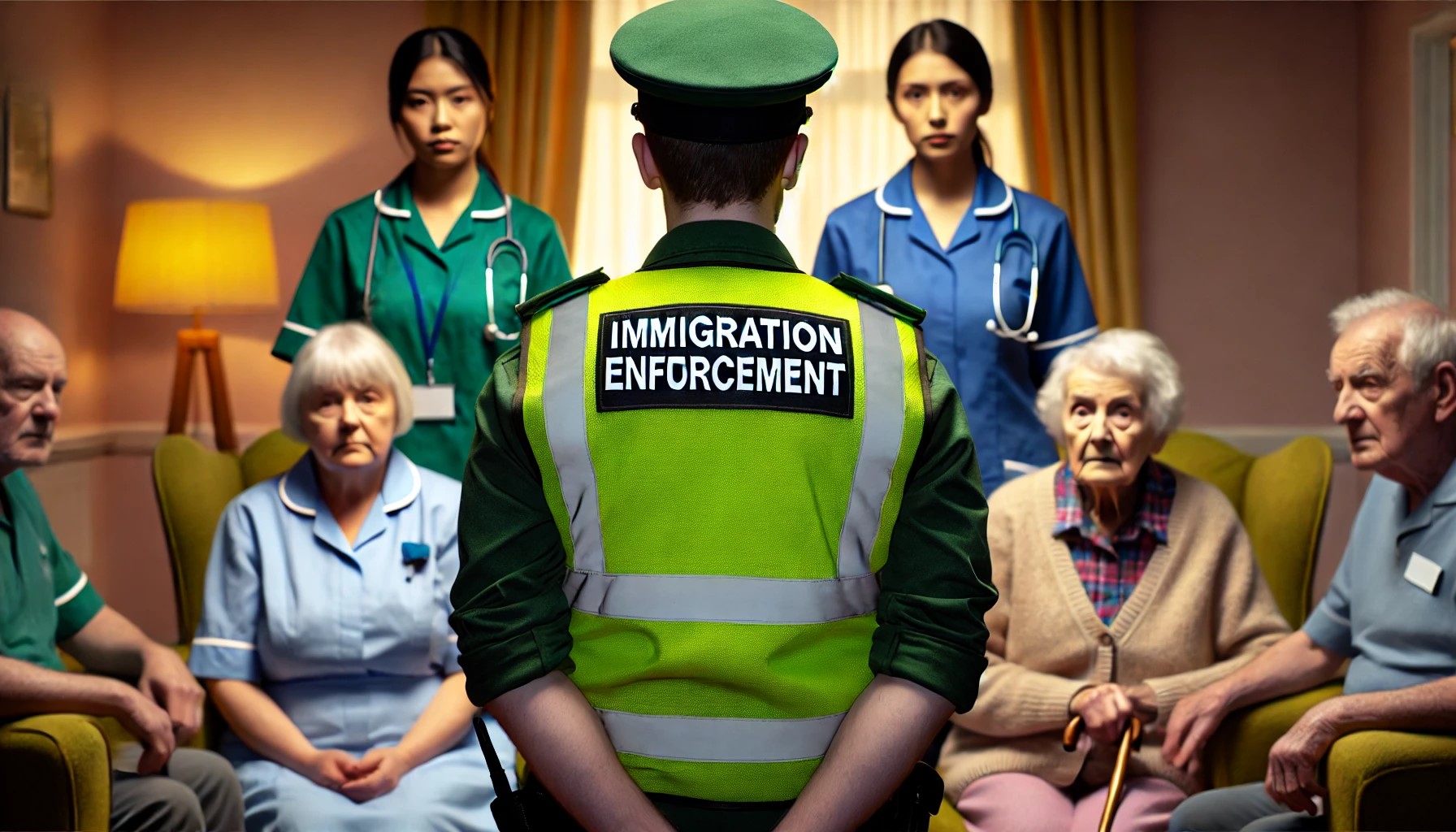The UK's Home Office has released research which shows that 50% of the population of England and Wales (but not Scotland) lives in 'areas of relatively high migration'. A further 30% lives in areas of 'moderate migration' and only 20% lives in areas with 'low migration levels'. The report was commissioned by the Home Office to try to discover what the impacts of immigration have been in England and Wales. It was published on 3rd July 2013.
The report says that the impact of immigration on the UK varies from place to place and according to the level of immigration and the type of immigrant. The report also finds that there is a greater effect on 'social cohesion' in areas where there has traditionally been little or no immigration but where there has been a recent, rapid growth in the numbers of immigrants.
The report, which is titled Social and Public Service Impacts of International Migration at the Local Level, says that the effects of immigration have been most evident in the fields of health and housing. 73% of new tuberculosis cases and 60% of new HIV cases are found among immigrants. Rents in London are being driven up by increased demand caused by large immigrant populations. In addition, unscrupulous landlords are letting out properties to high numbers of tenants. There is also some evidence of increased demand for schools. Immigration seems to have no overall impact on crime levels.
Seven areas of highest migration
The geographical areas of highest migration are- ;'Superdiverse London'. This area comprises 13 London boroughs, mainly in East London with 'a history of migration, very high rates of migration for all [types of] migrants'
- Cosmopolitan London and periphery. This comprises six, wealthy, mainly west London boroughs and the cities of Oxford and Cambridge which have 'high rates of migration particularly for students, migrant workers and migrants from Europe and the New World'
- London Suburbs and Satellite Towns. This area includes some outer areas of London such as Barking and Dagenham and some satellite towns such as Slough and Watford
- Diverse Conurbation Centres. This includes cities such as Birmingham, Cardiff, Manchester and Newcastle which have 'high rates of African and Asian migration, child and international student migration and a high proportion of supported asylum seekers'.
- High Turnover Provincial and Student Towns. These have 'higher levels of international student migration but moderate migration of other migrants'.
- Asylum Dispersal Areas. These include towns such as Plymouth, Rochdale, Swansea, Doncaster and Dudley. These areas have 'high proportions of supported asylum seekers, high worklessness and social housing needs'
- Migrant Worker Towns and Countryside. These include towns such as Boston, Newark and Taunton and countryside areas such as Herefordshire, West Lancashire and West Norfolk. There are 'high levels of migration from the EU Accession countries' (which include Poland, Lithuania and Latvia)
The report also breaks immigrants down into three different categories and examines the differing consequences that each type of immigrant typically has on the communities in which they live.
Three main types of immigrant
The three categories are- Legitimate international students and non-European Economic Area skilled workers. These immigrants will have come to the UK on Tier 4 student visas and Tier 2 skilled worker or Tier 1 high value migrant visas. The report says that they are likely to 'have low impacts on public services and social cohesion'. They use services less than the host population.
- Low-skilled migrant workers. These workers may have come to the UK illegally or they may have come as Tier 4 students but then overstayed their visas. They may also have come from Eastern Europe from one of the 'Accession Countries' which joined the EU in 2004. These countries are typically poorer than the rest of the EU and many workers from these countries have come to the UK to work in low-skilled, low-wage jobs such as construction and agricultural labour. The report says that, in economic boom times, these migrants can 'bring economic benefits to some sectors' but they can also 'have higher impacts on health, housing and social cohesion'. Illegal immigrants are likely to have more negative consequences for the host community than others. These immigrants, who include those who arrive on student visas but actually intend to work, 'often live in poor conditions, sometimes work illegally, and therefore do not contribute taxes and poorly integrate with the community in which they live'.
- Asylum-seekers and refugees. Whether with families or alone, asylum-seekers and refugees are likely to have the highest impact on services. They also use the health service more than the host population and other immigrants.
Areas of highest impact
The report also finds that the impact of immigration on the host community tends to be greatest in areas of high migration where there is no history of immigration. The report says that social cohesion has been most adversely affected in two main instances- In medium-sized towns which have recently experienced high inflows of low-skilled, eastern European immigrants who work in agriculture, such as Boston in Lincolnshire and
- In 'asylum dispersal areas' such as Bolton, Rotherham and Plymouth, where asylum seekers have been moved to live in areas where there had been previously been few immigrants.
The UK's Immigration Minister Mark Harper told the BBC that the report shows the impact that uncontrolled immigration can have and said that the UK government was on target to reduce net immigration to 100,000 annually by 2015.
Workpermit.com is a specialist visa consultancy with nearly twenty-five years of experience dealing with visa applications. We are OISC registered. We can help with a wide range of visa applications to the UK or your country of choice. Please feel free to contact us for further details.




